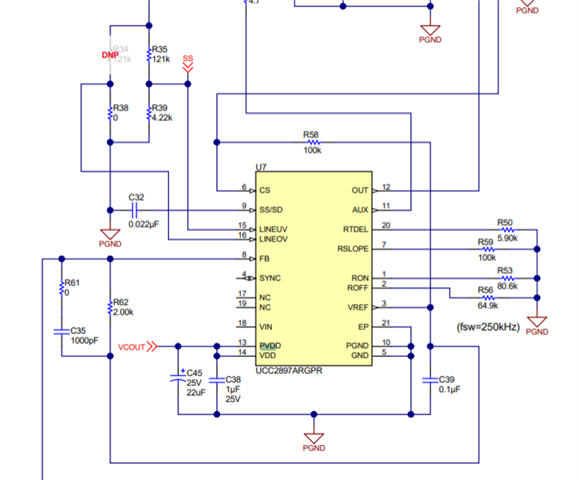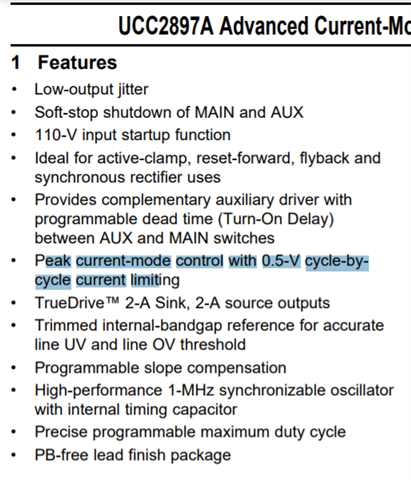Other Parts Discussed in Thread: PMP21103,
Hi Expert,
My customer has question about UCC2897A. customer follow PMP21103 reference design and we saw UCC2897A Vcc pin is floating. we would like to check below two question.
1. what's impact for floating Vcc pin? If customer only use AUX power to VDD.
2. Is it will impact cycle by cycle current limit function? (Customer use Flyback structure)





